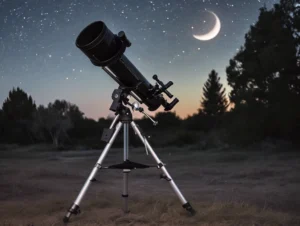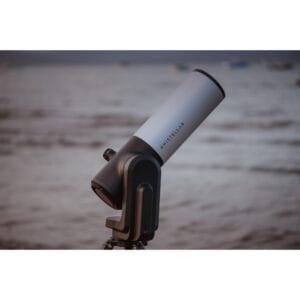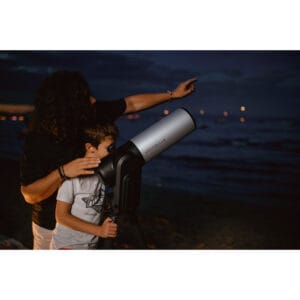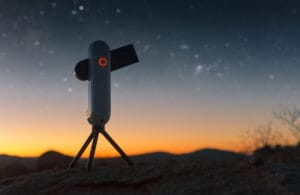“What is a good telescope for beginners?” is a question we receive almost daily at Telescoop.nl. Understandable: there’s a wide selection, the differences are technical, and some brands make empty promises about “600x magnification” which leads to disappointment in practice.
In this guide, we’ll help you make a focused choice: based on practical experience, customer data, and current insights from the community. We distinguish between classical viewing through an eyepiece and digital stargazing via a screen. Both have their own charm and their own best models.
In this blog, we explain what you really need to consider, which models are suitable, and how to confidently choose a telescope that matches your level and expectations.
Or directly view our complete collection of beginner-friendly telescopes.
What should You Consider when Choosing?
A good beginner’s telescope is stable, provides clear images, and is intuitive to use. Not the magnification, but the aperture of the telescope (in mm) determines how much you actually see. Also important: do you want to look through an eyepiece, or would you prefer to see the image via a screen?
This brings us to the two main options:
Dobsonian telescopes: classical, educational, optically strong
Smart telescopes: digital, user-friendly, quick results
Dobsonian Telescopes: Educational and Powerful
Dobsonians are by far the most recommended models for those who really want to learn stargazing. They have a large mirror (130 mm or more), a simple setup without electronics, and provide a clear view of the moon, planets, and bright nebulae.
They’re perfect for those who enjoy learning to recognize constellations and love the “traditional” discovery of the night sky.
Recommendations:
Sky-Watcher Heritage 130/650 – compact, collapsible and reliable
Sky-Watcher Heritage 150/750 – extra light gathering, still manageable
The rule of thumb is: buy a dobson with the largest aperture focal length (the first and second number) that fits within your budget. This will let you see more details.
Smart Telescopes: Quick Start, but with Hidden Depth
Smart telescopes like the Seestar S50 and DWARF 3 are designed to automatically find celestial objects, focus, and display images on your smartphone or tablet. This makes them very accessible for those who want quick results, without knowledge of constellations or alignment.
But don’t be mistaken: if you want to go beyond a “wow photo of the moon”, you’ll quickly encounter terms like field rotation, live stacking or even EQ mode. The real learning comes from understanding exposure time, image adjustment, and post-processing. This makes smart telescopes ideal for those who want to progress into astrophotography later, but they’re less suitable if you want to look through an eyepiece traditionally.
Recommended models:
Seestar S50 OR S30 – complete, user-friendly and expandable with filters
DWARF 3 – more control, wider field of view, perfect for deep-sky photography
Traditional Stargazing? Choose a Dobsonian
Want to peer through an eyepiece, learn to navigate the sky yourself, and really “get to know” the starry sky? Then a Dobson telescope is still the best choice. They offer great light gathering, require no electronic alignment, and are popular among beginners and advanced users alike.
Want to make searching a bit easier without sacrificing the classic optical experience? Then a Celestron StarSense Explorer is a nice middle ground: you use your smartphone only to find the object, not to view it.
Top models:
Sky-Watcher Heritage 130/650 or 150/750 – ideal for visual observations, compact and powerful
Celestron StarSense Explorer LT 114AZ – with smartphone navigation, suitable for children and families
Celestron StarSense Explorer Dobsonian – large aperture, classic operation with digital assistance
Light Pollution: Problem or not?
A frequently asked question is whether you can see anything at all in the city. Good news: for observing the moon, Jupiter and Saturn, light pollution hardly matters. These objects are bright enough to be clearly visible even above a city with street lighting.
However, if you want to view fainter deep-sky objects like nebulae or galaxies, a dark environment outside the city is important. In that case, a telescope with a larger aperture (like a 150 mm Dobson) or a smart telescope with stacking function provides better results.
Want to see what the planets look like? Read our blog series about planets through a telescope here.
What is a Good Telescope for Beginners? Our Conclusion
The best telescope for beginners isn’t just one, but depends on your preferences, environment, and learning goals. Choose a Dobsonian if you want to learn about the night sky in the classical way and value image quality through the eyepiece. Go for a smart telescope if you want to start both visually and digitally, with room to grow into astrophotography later.
Telescoop.nl helps you every step of the way. We don’t sell marketing tricks, but carefully selected models that really work. Use our selection guide or ask your question, and we’ll ensure you start your journey through the universe well.





